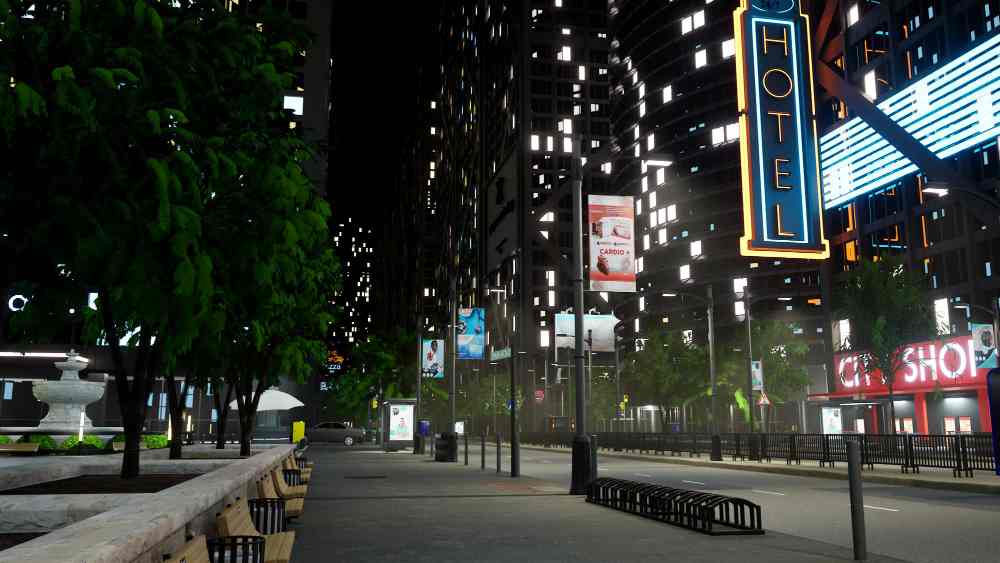The Impact of Commercial Outdoor LED Screens
Introduction
Commercial outdoor LED displays have become a cornerstone of modern advertising, event management, and public communication, transforming how businesses and organizations engage audiences. In 2025, the global outdoor LED display market is valued at USD 10.95 billion, projected to reach USD 19.88 billion by 2034 with a CAGR of 6.8%, in Malaysia, where tropical conditions like heavy rainfall (2,500mm annually) and 80% humidity challenge technology, these screens are engineered for durability and visibility. Used in digital billboards, retail displays, and event backdrops, they offer dynamic, high-impact solutions. This article explores the role of commercial outdoor LED displays, their key features, applications, challenges, and future trends, with a focus on their utility in Malaysia’s vibrant market.

Unmatched Visibility and Engagement
Commercial outdoor LED displays are prized for their ability to capture attention in high-traffic environments. With brightness levels of 5,000 to 10,000 nits, they ensure vivid imagery even in Malaysia’s intense sunlight. Their high resolution, with pixel pitches from P4 to P10, delivers sharp visuals for viewing distances of 4-60 meters, ideal for billboards along highways like the PLUS Expressway or urban hubs like Kuala Lumpur’s Bukit Bintang. Dynamic content—videos, animations, and real-time updates—boosts engagement by up to 30% compared to static signage, driving brand recall and consumer interaction.
These screens support interactive features like QR codes or touch capabilities, increasing audience engagement by 25% in digital out-of-home (DOOH) campaigns. In Malaysia’s DOOH market, valued at USD 218.56 million in 2025, they enable retailers to run time-sensitive promotions or event tie-ins, maximizing impact. Cloud-based content management allows instant updates, ensuring relevance in fast-paced commercial settings.
Durability for Commercial Reliability
Designed for Malaysia’s tropical climate, commercial outdoor LED screens feature IP65 or IP67 ratings, protecting against rain, dust, and UV rays. Corrosion-resistant coatings and thermal management systems handle temperatures up to 50°C, ensuring consistent performance. With lifespans exceeding 100,000 hours (10+ years), they offer long-term reliability for businesses.
Modular designs facilitate quick repairs, as individual panels can be swapped without dismantling the entire display, minimizing downtime for critical advertising slots. Fire-resistant materials and compliance with CE, RoHS, and Malaysia’s SIRIM standards ensure safety, critical for urban installations. These features make them a dependable investment for commercial applications.
Versatile Commercial Applications
In Malaysia, commercial outdoor LED displays serve diverse purposes. In advertising, they dominate DOOH campaigns, displaying vibrant ads in high-traffic areas like shopping malls or city centers. For example, LEDtronics’ installations in Kuala Lumpur have increased footfall for retailers by leveraging dynamic visuals. Retail environments use them for storefront displays, showcasing promotions or interactive campaigns that drive sales.
At corporate events and trade shows, such as the Kuala Lumpur International Motor Show, these screens provide live feeds, product demos, or branding, enhancing engagement. In public spaces, they serve as information hubs, displaying schedules or alerts at transport hubs like KL Sentral, improving commuter experiences. Their ability to support 4K content and seamless splicing creates immersive experiences, as seen in Penang’s festival displays.
Key Features Driving Commercial Success
Commercial LED screens are equipped with advanced features. Surface-Mounted Device (SMD) technology delivers wide viewing angles (160°) and vibrant colors, while high refresh rates (3,840Hz+) ensure flicker-free visuals for video ads. Anti-glare coatings and ambient light sensors optimize visibility day or night. Energy-efficient designs, consuming 50% less power than older systems, reduce operational costs, aligning with Malaysia’s sustainability initiatives.
AI integration enables audience analytics, tailoring content to demographics, and boosting ROI by 35%. IoT connectivity supports synchronized multi-screen campaigns, ideal for nationwide brand promotions. Cloud-based management allows real-time updates, ensuring flexibility for time-sensitive campaigns.
Challenges in Commercial Deployment
Despite their advantages, challenges exist. High initial costs (USD 600-2,500/sqm) and installation expenses (USD 5,000-20,000) can be significant, though rentals (MYR 200-500/sqm/day) offer flexibility. Maintenance in Malaysia’s humid climate requires regular cleaning to prevent corrosion or dead pixels. Urban light pollution regulations under Malaysia’s Local Government Act 1976 mandate brightness controls. Structural assessments for heavy screens (20-50kg/sqm) are critical to ensure safety. Compliance with SIRIM and import regulations adds complexity for businesses sourcing from China, which supplies 70% of Malaysia’s LED screens.
Future Trends and Outlook
In 2025, commercial outdoor LED screens are evolving with MicroLED for finer resolutions, transparent designs for aesthetic integration, and solar-powered models for sustainability. AI and IoT advancements enable smarter, data-driven campaigns, while flexible screens allow creative installations in retail and events. In Malaysia, eco-friendly designs align with national green goals, promising continued growth in the DOOH sector.
Conclusion
Commercial outdoor LED screens are powerful tools for advertising, events, and public communication in Malaysia. Their high visibility, durability, and advanced features make them ideal for the tropical climate, driving engagement and ROI. As technology advances, their role in creating dynamic, sustainable displays will solidify their place in commercial landscapes.
Frequently Asked Questions (FAQs)
- What makes commercial outdoor LED screens effective for advertising?
High brightness (5,000-10,000 nits) and dynamic content boost visibility and engagement by 30%, ideal for high-traffic areas in Malaysia. - How do these screens withstand Malaysia’s tropical climate?
IP65/IP67 ratings, corrosion-resistant coatings, and thermal management ensure durability against rain, humidity, and heat for 10+ years. - What are the primary commercial applications of LED screens?
They excel in DOOH advertising, retail promotions, event displays, and public information systems, enhancing engagement and reach. - What challenges do businesses face with commercial LED screens?
High costs (USD 600-2,500/sqm), maintenance needs, light pollution regulations, and structural requirements are key hurdles. - What future trends will enhance commercial LED screens in 2025?
MicroLED, transparent designs, AI analytics, and solar-powered options will drive sharper, sustainable, and smarter displays.
